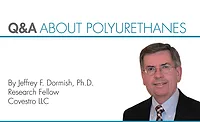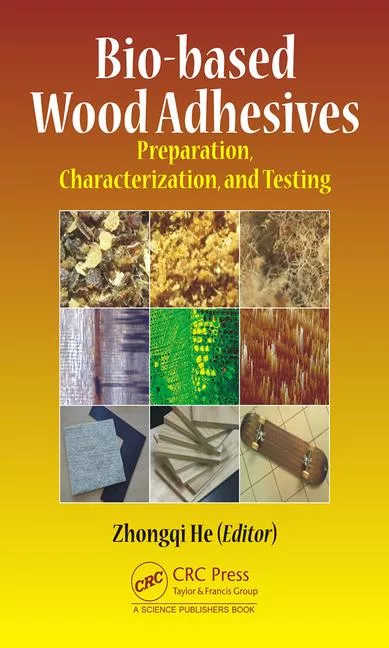Q&A About Polyurethanes: Increasing Market Requests for Sustainable Adhesives
How is the adhesive industry addressing market requests for increased sustainability?



Researchers have identified a number of global trends that will have an impact on the adhesive business. One major trend is to use energy more efficiently—both to protect the environment by reducing carbon emissions and from a basic cost-of-energy standpoint.
A fundamental approach used for many years in the automotive industry was to reduce the weight of vehicles and thus improve gas mileage. However, further improvements will require new production methods and materials for vehicle construction. The increased use of substrates such as aluminum and composites is evidence of this ongoing transformation. For instance, a truck introduced this year uses aluminum body panels, and the structure uses a combination of rivets and adhesives to produce a vehicle that has a significantly reduced weight while still meeting safety and performance requirements.
In addition, the increased use of composites requires the adhesive to bond materials with different coefficients of thermal expansion (e.g., aluminum/steel or composite/metals). Polyurethane polymers have that capability, and they also exhibit high bond strength to these types of substrates.
Energy can be saved indirectly by reducing the weight of the goods being transported. For example, in food packaging, glass and cans have traditionally been used to bring foodstuffs with a long shelf life to the consumer. Flexible packaging has a much lower weight and has been able to displace cans for some applications. Developments have occurred in film technology and two-component polyurethane adhesives to produce multilayer film packages that can survive the high-temperature retort sterilization treatments. This enables the production of foods with a long shelf life. As a result, sustainability is demonstrated through lower energy use and reduced waste of valuable food.
An ideal situation that demonstrates sustainability is using a renewable substrate with a low value to create a value-added final product. Prime examples can be found in the wood industry. Moisture-curing adhesives based on polyisocyanate prepolymers are used to laminate small pieces of wood to form water-resistant, high-strength, load-bearing engineered lumber. This technology is favored since it allows architectural flexibility and produces buildings with the attractive appearance of exposed wood beams. Polyisocyanates are also used to crosslink water-based emulsions of styrene butadiene rubber, ethylene vinyl acetate or polyvinyl acetate polymers for structural wood-bonding applications. These adhesives are employed for a variety of applications, including finger jointing and I-beams.
The reduction of solvent content has also been a consistent part of improving the “green” and sustainable character of adhesives. This has been accomplished in flexible packaging applications with two-component, 100% solids polyurethane adhesives, as well as with waterborne polyurethanes. Studies of the sole-bonding operation in the footwear industry have discovered a greater than 50% reduction in the carbon footprint by switching from a solvent-based adhesive to a polyurethane dispersion.
The ongoing emphasis on sustainability should offer new opportunities for the growth of current adhesive applications and the development of products for new uses.
Any views or opinions expressed in this column are those of the author and do not represent those of ASI, its staff, Editorial Advisory Board or BNP Media.
Looking for a reprint of this article?
From high-res PDFs to custom plaques, order your copy today!








